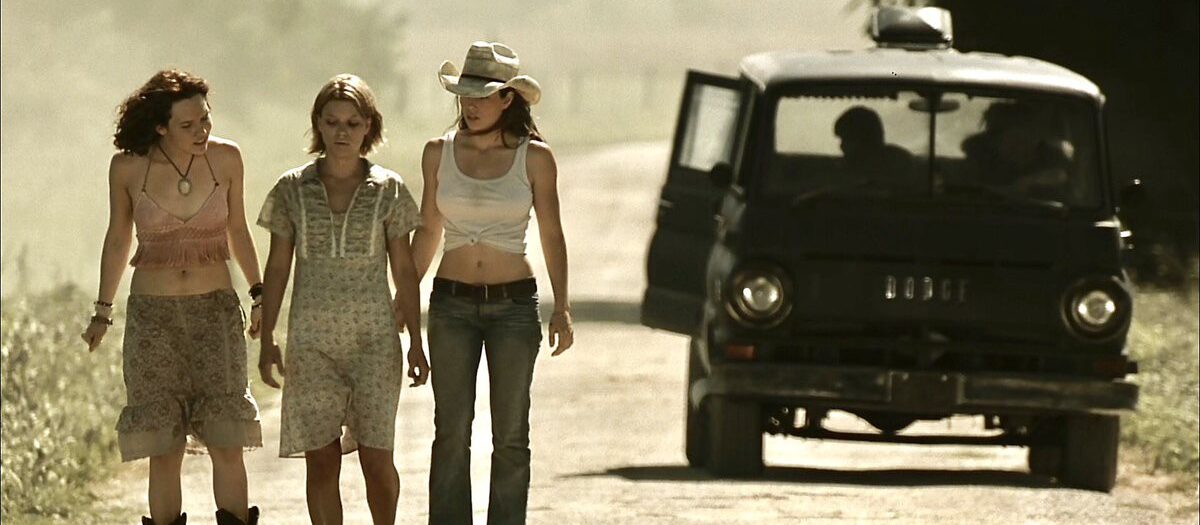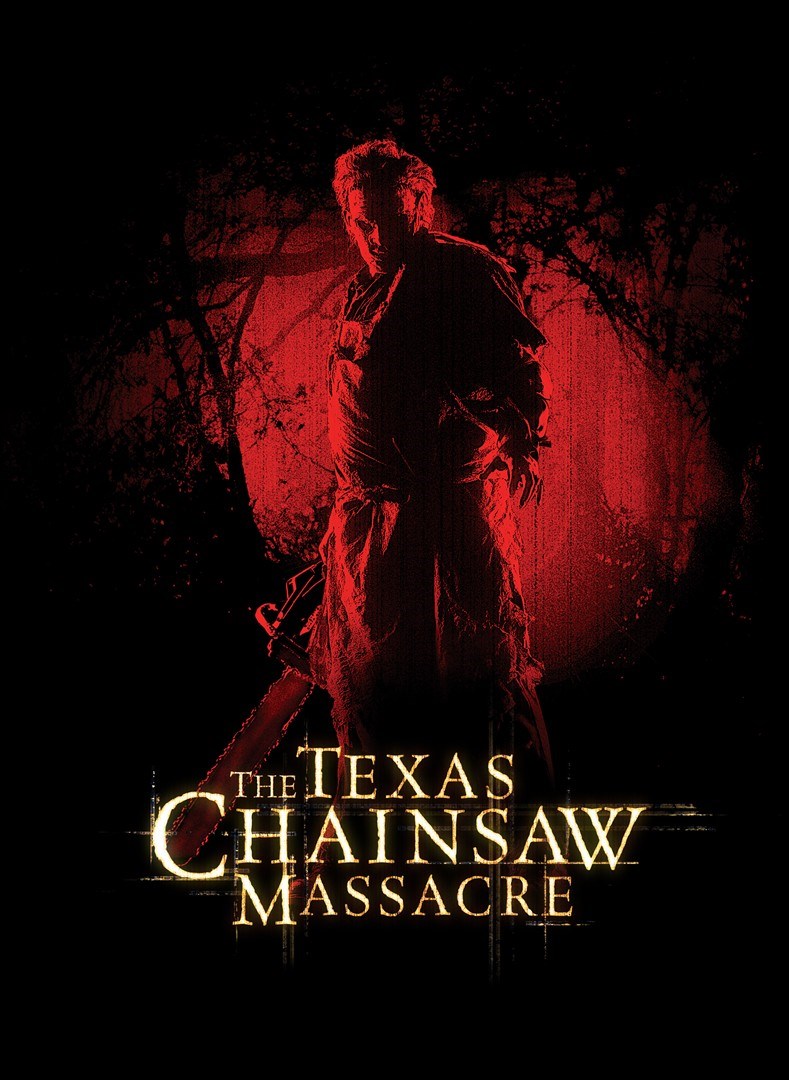

“You little turd, you’re so dead you don’t even know it.”
As far as slasher flicks go, Marcus Nispel’s The Texas Chainsaw Massacre isn’t all that bad. Passable script, somewhat winsome cast, solid set design, bountiful gore, gritty palette, unnerving camera tricks.
Bookended by The Blair Witch Project inspired grainy handheld segments, it follows the viscera-heavy formula utilized by many contemporary films in the genre by setting up a series of contrived situations where, one by one, our handsome young hippies (Jessica Biel, Jonathan Tucker, Erica Leerhsen, Mike Vogel, Eric Balfour) frantically strain to avoid the lumbering butcher’s deadly assaults. Most of them fail, but in the end, the obvious final girl (Biel) manages to evade Leatherface (Andrew Bryniarski), his sadistic father (R. Lee Ermey), and the rest of their psychotic family by the skin of her teeth. That’s the basic template for a slasher and Nispel and his team meet that criteria without much trouble, lining up their victims and brutally killing them at a steady pace.
The problem, quite obviously, is that Nispel’s film is a remake of Tobe Hooper’s The Texas Chainsaw Massacre, one of the seminal entries in the horror canon. It’s not a shot-for-shot remake à la Gus Van Sant’s Psycho, but set against the grimy low-budget production, raw verisimilitude, unconventional plotting, natural performances, sharp sense of terror, and subliminal cultural critiques of the original, Nispel’s remake feels decidedly banal and substanceless. The original is so unnerving that it tricked a generation of moviegoers into believing it was the goriest film ever made when, in fact, it is nearly bloodless. The remake provides the gore (though it’s far from the goriest film ever made), but fails to terrify.
Working under the aegis of Michael Bay, Nispel rehashes the familiar scenario (previously rehashed twice before in Leatherface and The Next Generation) of hitchhikers, backwater gas stations, and so on, but does so with a style that renders safe and predictable what was previously dangerous and staggering. It’s all rapid cutting and disorientation (with occasional misguided nods toward backstory)—a method that induces cringes of disgust and momentary shock when meathooks sink into flesh and whirring saws lop off limbs, but not one that evokes anything approaching the deep-seated dread that marks Hooper’s masterpiece. To wit, the film’s first death is a bullet-to-the-head suicide in the back seat of a van, after which the camera tracks backward through the bullet hole, through the back window of the vehicle, and then another couple dozen yards down the road. How’s that for undermining the suspension of disbelief? In the end, it becomes a sadistic endurance test, a precursor of the “torture porn” subgenre (Saw, Hostel) that was soon to make a flash in the pan.
Kudos to cinematographer Daniel Pearl (who shot the original), R. Lee Ermey as the psycho sheriff, and whoever reworked Eric Balfour’s face into a grotesque mask, but shame on whoever designed the Hewitt farmhouse to look like a modern government building and whoever signed off on playing ‘Sweet Home Alabama’ at the exact same time that a text overlay informs us that the film is set the year before the song hit the airwaves. I’m undecided on whether or not I like the House of Leaves–esque building-is-bigger-inside-than-outside phenomenon.